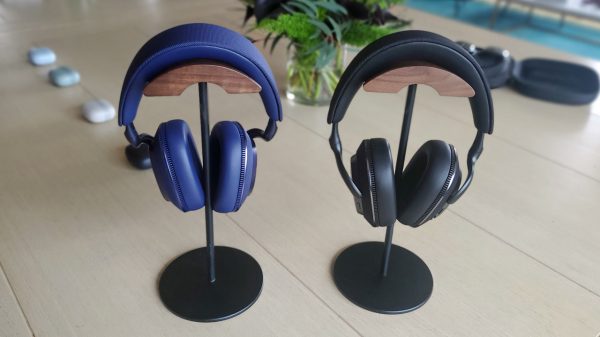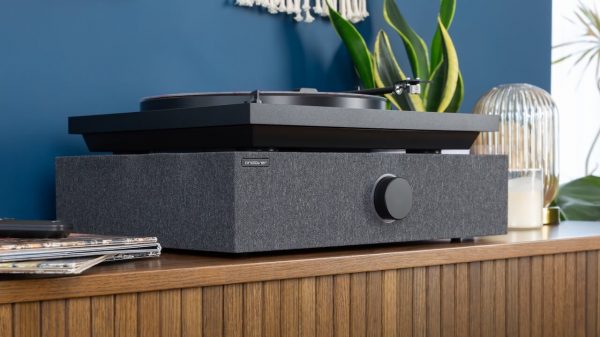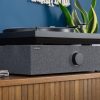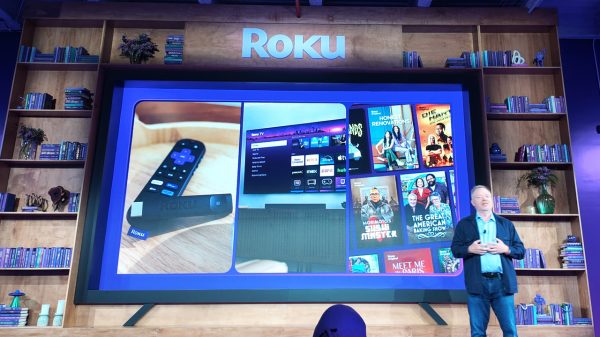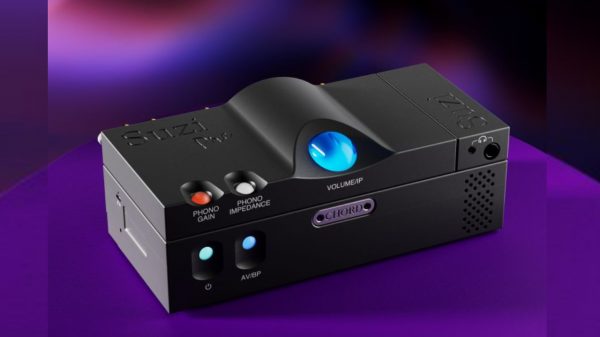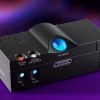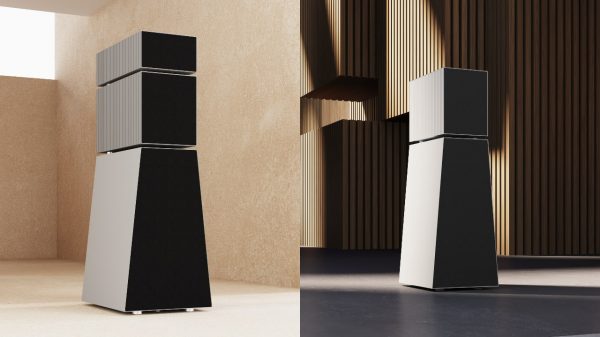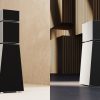Over the past 4 years, we have covered the vintage audio category with a series of regular columns from Eric Pye and Jeremy Sikora, which also included our popular podcast series produced by eCoustics Podcast Editor, Mitch Anderson. You can listen to the entire series here.
Vintage audio remains very popular with consumers spending a great deal of money on iconic designs from Sansui, McIntosh, Pioneer, Marantz, and NAD.
One of the most popular articles we have ever run detailed Jeremy Sikora’s experience with his prized Quad 303/33 power amplifier/pre-amplifier combination.
Tens of thousands of readers made it clear to us that both of these award-winning and iconic components still have a very loyal following.
Quad has decided to bring both of them back. For a lot more money but we think the pricing is rather reasonable — especially if they still offer the same ‘magic’ of the original components with updated connectivity options, more power, and the same levels of durability and reliability.

Design evolution
QUAD’s decision to revisit the 33 and 303 was in no small part due to the continuing demand for these amps on the second-hand market some four decades after they were discontinued in the 1980s.
To achieve this vision, QUAD assembled a formidable in-house team at its HQ in Huntingdon, Cambridgeshire, led by four esteemed individuals: Jan Ertner, lead electronics designer for QUAD and sister-brand Audiolab, Rob Flain and Paul McConville who are QUAD’s most experienced service engineers, and David McNeill, QUAD’s industrial design chief for the last two decades.
In due deference to the iconic status of the 33 and 303’s industrial design, McNeill has delivered an evolutionary continuation of the external form rather than a radical overhaul.

The new 33 preamplifier’s compact size and shape is faithful to the original, but the detailing has been enhanced and the casework’s grey colour is a little less ‘taupe’ and more ‘matt silver.’
The distinctive control layout is similar, with a volume knob to the left and a trio of flush-mounted rotary controls to the right (although the functionality of these controls is now somewhat different).
Crucially, the original 33’s orange accents remain, albeit updated. The buttons beneath the rotary controls are now all orange (no white), with the addition of LEDs to illuminate them.

And the orange strip containing labelling for the three flush-mounted rotaries now includes an LCD display with orange backlighting.
Such things were not possible in the 1960s, yet the ingenious way these visual updates have been applied to the new 33 feels entirely in keeping with the classic aesthetic.
The backlit buttons and LCD display – which can be dimmed or switched off entirely – are not the only nods to modern expectations. Between the 33’s two rows of orange buttons are a 6.35mm headphone socket and an IR receiver for the supplied remote control – more ‘mod-cons’ added to the original’s specification.
Further differences in the facilities offered by the original 33 and the new 2024 edition are highlighted in the ‘Technology’ section below.
Like the 33, the new 303 stereo power amplifier is instantly recognisable yet smartly updated. The original’s vertical orientation remains, together with the distinctive heatsink fins at the front – albeit there are now ten fins rather than eight, and these have been neatly squared off.
The addition of an illuminated orange standby button ties the new 303’s aesthetic with the 33, topped off with QUAD’s musical note symbol – etched into the top surface – another classy touch.
The original 33 and 303 were admired for their reliability and durability — Quad and MoFi made both of these critical concepts a significant part of the new designs. Quad’s engineers were tasked with delivering modernised versions of both products that will outlast their owners.
QUAD 33

The original 33 preamplifier was launched at a time when vinyl was king and digital audio was still some 15 years away from entering the domestic scene in the form of CD.
It offered several vinyl-oriented facilities for users to tailor the sound, including 5k, 7k and 10k filters, accessed via the buttons beneath the rotary controls for bass, treble and slope adjustment.
These filters were intended to remove record surface noise and high frequency distortion when used in concert with the slope dial.
The new 33 remains a staunchly ‘analog’ preamplifier, with no built-in DAC for digital sources, but its facilities have been adapted to better suit contemporary requirements. For a start, the filters for vinyl have gone and the bass, treble and slope dials have been replaced by bass, tilt and balance.
The ‘Tilt’ control was created by QUAD’s founder Peter Walker as a more sophisticated form of tone control.
It was introduced in 1982 on the QUAD 34 preamp, which succeeded the 33; although not contemporary to the original 33, it is considered a classic QUAD feature that remains highly useful and so has been added to the new 33.
Walker believed that traditional bass and treble controls were a rather ham-fisted way of adjusting tonal balance. The tilt control differs by adjusting both ends of the frequency spectrum together, either attenuating the bass and lifting the treble or lifting the bass and attenuating the treble in 1dB steps.
Essentially, it rotates – or tilts – the audible frequency range on a 700Hz axis, thereby adjusting the overall sound balance with ‘warm’ or ‘cool’ hints without altering volume or adding colour to the sound.
The tilt control works in tandem with independent bass adjustment, accurately applied from -3dB to +3dB. These subtle and precise methods of tailoring tonal performance are useful given the varying quality of the music sources we listen to today, from streaming services to vinyl to hi-res digital files.
They also help to tune the sound to suit different acoustic environments and, of course, personal taste.

Connectivity For the Modern Audiophile
A quick look at the rear panel of the original reveals DIN sockets for its inputs and outputs.
Gone.
Having invested in a number of Chord Company DIN to RCA cables in recent years to use with older Quad and Naim components, I’m a tad bummed.
All of the DIN sockets have been replaced with single-ended and balanced XLR inputs and outputs.
The original’s four source inputs – labelled ‘disc’ (for vinyl), ‘radio 1’, ‘radio 2’ and ‘tape’ – have been replaced by four line-level inputs (3 x RCA and 1 x XLR) and a phono input, and there is also a choice of RCA and XLR outputs to connect the 303.
Other modern conveniences include two 12V trigger outputs and a USB data input for firmware updates.
While the latter input shows that the new 33’s user interface is microprocessor controlled, the audio signal path is entirely analog.
A high-quality motorised Alps potentiometer adjusts volume, while the three rotary encoders for bass, tilt and balance provide the precision of digital control but act entirely in the analogue domain – classic QUAD features updated for 2024 and beyond.
The new 33’s audio circuitry is faithful to the intention of the original – a groundbreaking design of its day – whilst acknowledging that the quality of today’s electronic components is vastly better than those available in the 1960s.
The design team has created an entirely new circuit design, including a low-noise, custom-specified toroidal transformer, numerous reservoir/smoothing capacitors and five regulated supply rails, remaining true to the original’s ethos whilst improving on its sonic performance.
The new 33’s low-noise phono stage is also a significant advance on the original’s, with adjustable gain for MM and MC cartridges, precise RIAA equalisation, precision input filtering and an upgraded power supply, delivering every drop of detail dug from a record’s grooves.
As for the dedicated headphone amp – an entirely new addition – its current-feedback design and high slew rate ensures a dynamic and detailed performance with all manner of headphones.
The improvements to the phono stage make a lot of sense and it was wise of Quad to design a new internal headphone amplifier to support the listening habits of most listeners in 2024.
QUAD 303

The original 303 stereo power amplifier was (and still is) admired by hi-fi enthusiasts and studio professionals alike for three reasons: its reliability, set-up flexibility permitted by its compact form, and its smooth and richly detailed sound.
Peter Walker’s great circuit innovation for the 303 – the ‘triples’ output stage – remains at the new amplifier’s heart. A breakthrough in transistor amp design, it effectively forms a feedback amplifier-within-an-amplifier, requiring far less negative feedback, possessing exemplary thermal stability (meaning the current in the output stage is practically immune to temperature fluctuations) and producing lower distortion.
Whilst updated with modern circuit components, the new 303’s ‘symmetrical triples’ design is faithful to the original, providing a completely symmetrical output stage and rendering the resting current independent of output transistor temperature.
Distortion is reduced to emphatically low levels without sacrificing stability, maintaining this performance under all dynamic conditions.
The original’s Class AB design has been thoroughly revisited and revised, including a new 200VA low-noise toroidal transformer specially developed for the new 303.
QUAD’s new generation ‘triples’ design provides an advanced feedback topology for the discrete power amplifier’s output stage, delivering superior linearity and exceptional thermal stability.
The result is a compact, cool-running power amplifier that possesses the capacity to deliver dynamic power and maintain a firm hold on the music.
The original 303 delivered 45W per channel into 8 ohms, falling significantly below this rating into 4 ohms which might cause issues with some of today’s toughest loudspeaker loads.
Maintaining design continuity, the new edition does not attempt to massively ramp up the wattage in line with modern trends – doing so, especially within its classic compact form factor, would change its circuit and characteristics to a degree that it could no longer be considered a ‘303.’
The new amp is rated at 50W per channel into 8 ohms, and 70W into 4 ohms – the 8-ohm figure might appear a modest increase, but a much greater maximum current delivery of 10A ensures it is highly adept at driving difficult loads.
The new-edition 303 offers an upgrade path through the ability to connect two 303s in bridged mode, combining each amp’s two stereo channels into a single mono channel so each unit drives one speaker.
This increases the power output to 140W per channel into an eight-ohm load, elevating sonic muscle and control without upsetting the 303’s finesse.

Around the back, the new 303 is equipped with high-quality gold-plated binding posts to connect speakers, a choice of RCA and balanced XLR inputs for the preamp, and a 12V trigger input for the convenience of automatic power up/down when connected to the 33 preamp’s trigger output.
The Bottom Line
Two of the most iconic pieces of British hi-fi kit are back and with price tags that don’t seem out of line for 2024.
Two key questions:
Will the new Quad 303 and 33 offer the same durability and reliability? If so – that makes them a very wise investment.
Has “modernizing” the designs stripped away some of the flow, smoothness, and overall tonal balance of the original designs? If the answer to that is no — please take our money. Today.
We’re also pleased to see that there is no DAC or streaming module. These are time-tested designs that never should have vanished in the first place.

Price & Availability
The QUAD 33 Preamplifier will be available in November 2024 with an MSRP of $1,599.00 USD.
The QUAD 303 Power Amplifier will be available in November 2024 with an MSRP of $1,599.00 USD.
For more information: quad-hifi.co.uk
Related reading: Check out the original Quad 303 and 33


